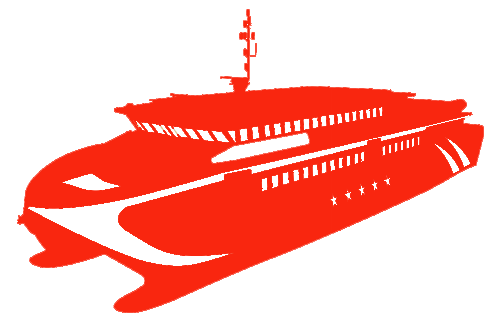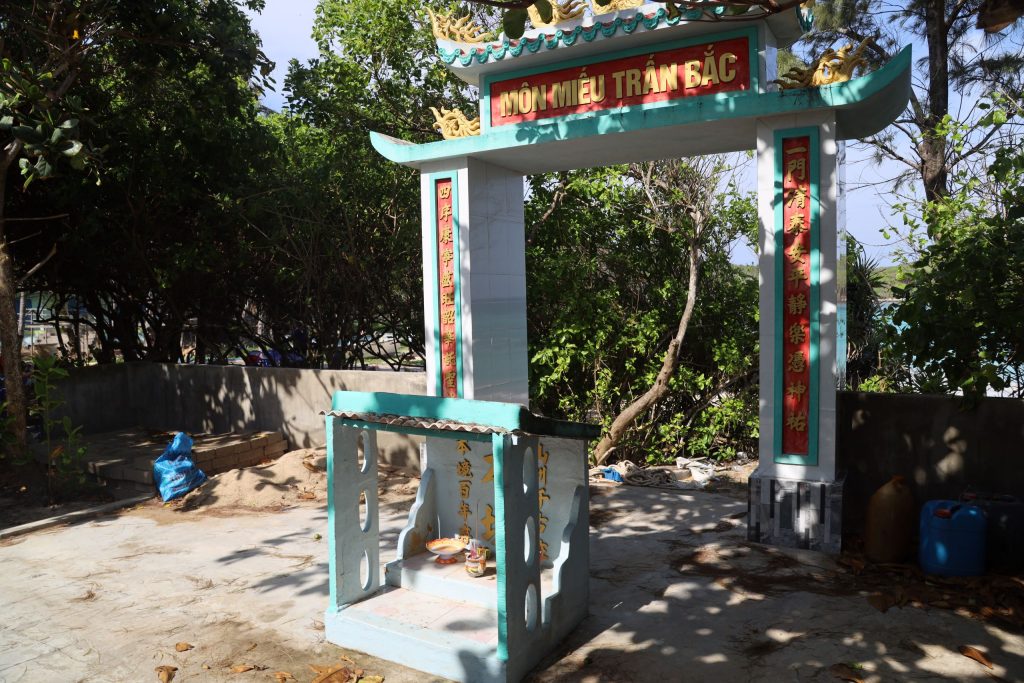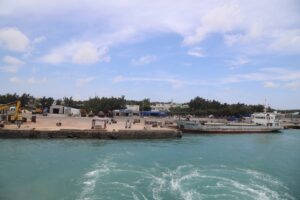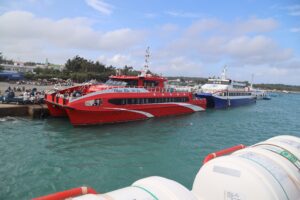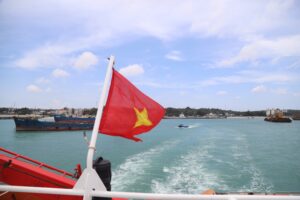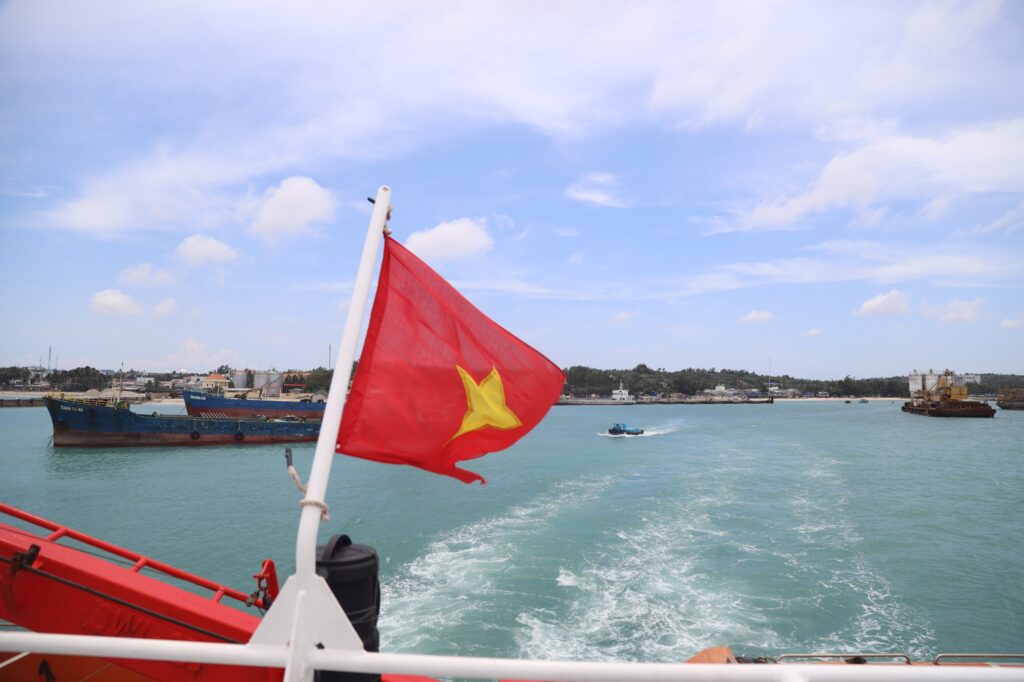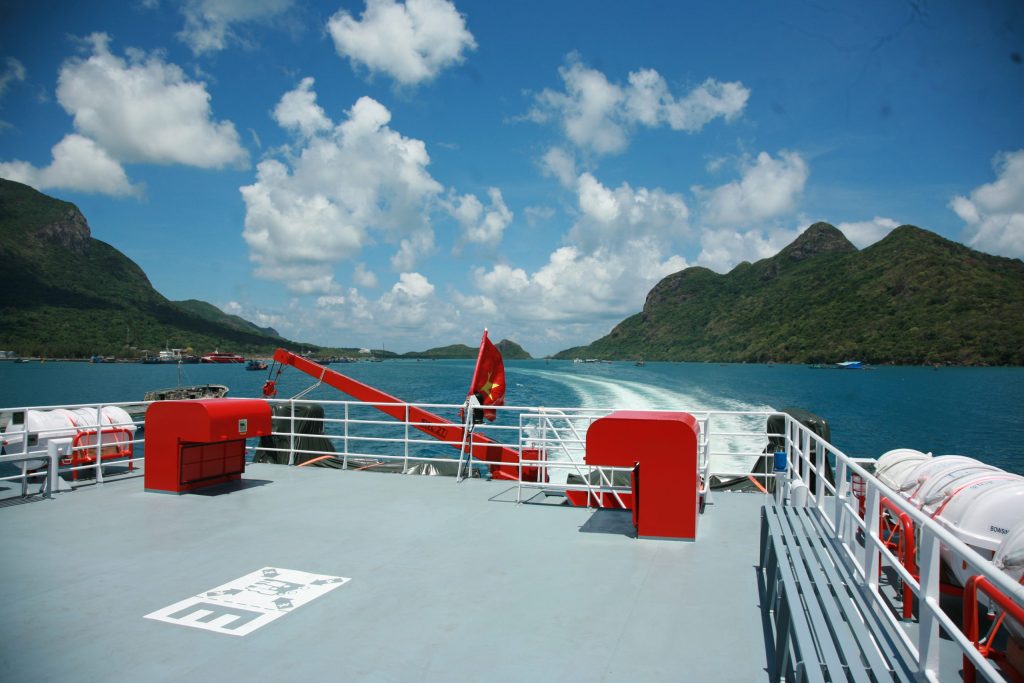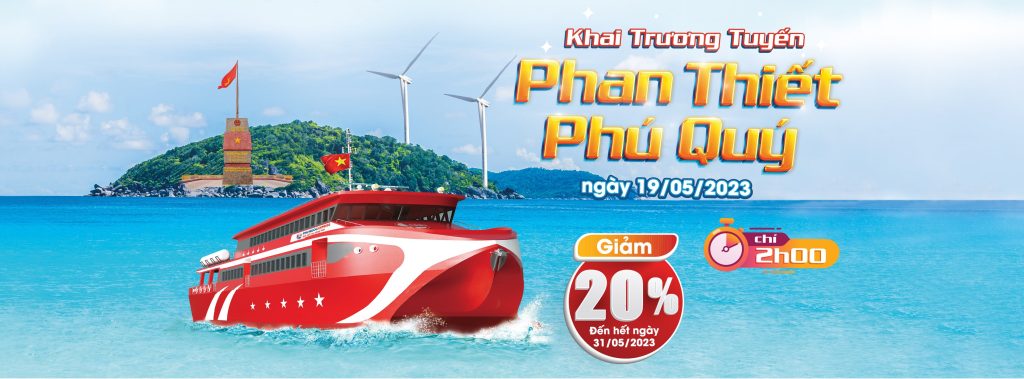The Trấn Bắc Shrine, also known locally as Miếu Trấn Bắc, is located on Hòn Tranh Island, part of Triều Dương Village in Tam Thanh Commune. It was built in the early 19th century and is one of the important spiritual sites for the people of Phú Quý Island.
The shrine is situated approximately 1.5 nautical miles southwest of the main island of Phú Quý. As such, visitors can only reach the shrine by sea, using boats or other water transport to cross over to Hòn Tranh.
The architectural layout of the shrine includes the Main Gate, the Main Hall (Chính điện), the Incense House (nhà khói), and the Whale God Tomb (lăng thờ thần Nam Hải). These structures are positioned on elevated land surrounded by a coconut grove that offers shade all year round. The shrine faces southwest. About 200 meters southeast of the shrine is the Gia Long Well, 7 meters deep and built from coral stone. Remarkably, the water in this well is fresh and drinkable year-round, unlike the nearby wells, which have brackish, undrinkable water. Gia Long Well has long provided clean water for military units stationed on Hòn Tranh.
The shrine’s Main Gate, located 10 meters in front of the Main Hall, is modestly constructed with a single pathway. Behind the gate stands the Main Hall dedicated to the deity Trấn Bắc, with decorative reliefs of dragons, phoenixes, sea serpents (giao long), and fish transforming into dragons. The hall features three entryways at the front and a traditional tứ trụ (four-pillar) wooden structure inside. The beams, crossbeams, rafters, and supporting posts are intricately joined to form a strong frame. The main pillar base is shaped like a flower vase, broad at the bottom and tapering upwards, while the ends of the central horizontal beam are carved in the shape of dragon heads facing the entrance.
Inside the Main Hall are three worship altars. The central wooden altar bears the character “Thần” (Deity) and houses the spirit tablets of Trấn Bắc, Chúa Ngọc Thiên Y Ana, and an image of Trần Hưng Đạo. The two side altars are dedicated to the village’s founding ancestors, Tiền Hiền and Hậu Hiền. The altars are ornately decorated with images of twin dragons, four sacred animals (tứ linh), phoenixes, and poetic couplets. To the right and slightly behind the Main Hall lies the Whale God Tomb, where 72 whale skeletons that washed ashore on Hòn Tranh over the years are respectfully preserved.
The title Bắc Quân Đô Đốc (Admiral of the Northern Army) received three imperial decrees during the reigns of Emperors Đồng Khánh and Khải Định. These decrees, which also honor the Whale God (thần Nam Hải), are preserved at Vạn An Thạnh. During annual ceremonies at Trấn Bắc Shrine, a procession is held to escort the decrees from Vạn An Thạnh to the shrine for worship, after which they are returned for safekeeping.
Each year, two main festivals take place at Trấn Bắc Shrine: on the 12th day of the third lunar month to honor Bà Thiên Y Ana (Chúa Ngọc), and on the 7th day of the eighth lunar month to worship Ông Trấn Bắc. The ceremonial rituals follow the same protocol as those at Vạn An Thạnh.
Currently, only four households live on Hòn Tranh Island, totaling about ten residents who primarily engage in small-scale farming. These families take turns safeguarding the shrine and the Whale God worship site. This has led to two challenges: first, due to the island’s status as a military base, it is difficult to obtain construction permits, making it hard to expand or restore religious sites, which remain small and cramped. Second, because of limited access and infrequent worship, many locals have gradually forgotten about these sites. As a result, they are often omitted from cultural surveys, and the origins and legends of the deities worshipped there are at risk of being lost.


